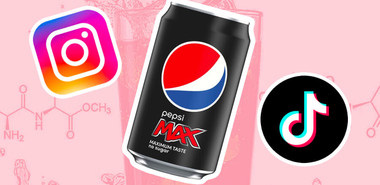The Plant Paradox Diet is a plan where you avoid certain plant foods that have lectins, which the diet claims can cause health issues. It means not eating things like grains, some veggies, and beans.
Plant Paradox Diet Explained 🌱
The Plant Paradox book by Dr. Steven Gundry explores the idea certain common foods typically considered healthy might actually harm our health due to lectins—a type of protein found in them.
Dr. Gundry argues that lectins can cause issues like weight gain and inflammation.
The book guides readers on how to avoid these foods, suggesting a diet that cuts out lectins. It’s a mix of science and diet advice, aiming to help improve health by changing what we eat.
What Are Lectins? 🍆
Lectins are a type of protein found in many plants, especially in grains, legumes (like beans and peanuts), and some vegetables.
They’re part of the plant’s natural defense system against pests and diseases. Lectins can bind to the cells in your digestive tract, which for some people might cause issues like stomach discomfort or inflammation.
However, cooking often reduces or eliminates their harmful effects, making many foods that contain lectins safe to eat.
What Does the Plant Paradox Diet Involve?
- To follow the Plant Paradox Diet, just avoid foods with lectins.
- You can eat any time and as much as you want, as long as you don’t eat lectins.
- There are two versions of the diet in the book:
- A low-carb, keto version for people with cancer (but it’s important to talk to a doctor before starting, as it’s not a cancer treatment).
- A 3-day detox plan for those new to lectin-free eating, which also cuts out dairy, eggs, sugar, seeds, grains, soy, and seed oils.
- After the 3-day detox, you return to a more normal diet, just without lectin-containing foods.
Plant Paradox Food List (Allowed ✅)
You can eat as much as you like of the following foods when on the plant paradox diet.
- Proteins: grass-fed meats, pasture-raised poultry, free-range eggs, wild-caught fish, and hemp products like “hempeh,” and hemp tofu.
- Starches and grain-free products: sweet potatoes, plantains, swede, parsnips, and paleo wraps or breads
- Nuts and seeds: macadamia nuts, walnuts, pecans, hemp seeds, sesame seeds, and hazelnuts (nuts are limited to 1/2-cup per day).
- Fruits: avocados, berries, and coconut (berries should be eaten in small amounts)
- Vegetables: mushrooms, broccoli, spinach, Brussels sprouts, asparagus, okra, carrots, radishes, beets, kale, and cabbage
- Dairy: goat’s milk and cheese, organic sour cream, organic cream cheese, organic heavy cream, and Brie. A2 milk is also permitted
- Fats and oils: grass-fed butter, plus olive oil, coconut oil, and avocado oil
Plant Paradox Food List (Not Allowed 🚫)
The following foods contain lectins Gundry considers harmful and should be avoided on the plant paradox diet.
- Proteins: soy products, grain- or soy-fed livestock, farmed fish, and all beans and legumes
- Grains and starches: pasta, potatoes cookies, crackers, pastries, whole grains, wheat, rice, oats, quinoa, barley, corn, and popcorn
- Nuts and seeds: sunflower seeds, pumpkin seeds, chia seeds, peanuts, and cashews
- Fruits: all fruits, except berries
- Vegetables: cucumbers, zucchini, pumpkin and other squashes, nightshades like tomatoes, capsicum and eggplant (Gundry says you can eat some of the banned veggies, including tomato, capsicum and cucumber, if they have been peeled and deseeded)
- Dairy: all A1 milk products, as well as Greek yogurt.
- Fats and oils: vegetable, canola, corn, peanut, and sunflower oils
Pros & Cons of the Plant Paradox Diet 👍🏻👎🏻
Pros | Cons |
|---|---|
| May Improve Digestive Health: Some people report relief from digestive issues after cutting out lectins. | Nutritional Limitations: Avoiding lectin-rich foods can lead to missing out on nutrients found in whole grains, legumes, and certain vegetables. |
| Weight Loss Potential: The diet may help some individuals lose weight due to reduced calorie intake from cutting out certain food groups. | Lack of Scientific Consensus: There is limited scientific evidence to support the claim that lectins are harmful for everyone. |
| Increased Awareness of Food Choices: Encourages mindfulness about what is being consumed, which can lead to healthier eating habits. | Restrictive and Difficult to Follow: The diet requires eliminating many common foods, which can be challenging and impractical for long-term adherence. |
| Potential Reduction in Inflammation: Some proponents claim a decrease in inflammation-related symptoms when following the diet. | Risk of Social and Eating Disruptions: The restrictive nature of the diet can make social dining and meal planning more difficult. |
| Beneficial for Certain Health Conditions: May be helpful for individuals with specific health issues, like gluten or lectin sensitivities. | Potential Expense: Specialized diets often require more expensive or hard-to-find ingredients. |
Is the Plant Paradox Diet Good for Weight Loss? 🤔
The Plant Paradox Diet might help with weight loss because:
- Eating Fewer Calories: You might eat fewer calories since it cuts out many foods.
- Healthy Foods: It encourages eating unprocessed, healthy foods.
- Feeling Full: The recommended foods can keep you full, so you might eat less.
But remember:
- Missing Nutrients: You could miss out on important nutrients.
- Varies for Everyone: What works for one person might not work for another.
- Hard to Keep Up: This diet can be tough to stick to long-term.
It’s a good idea to talk to a doctor or dietitian before starting any new diet.
Plant Paradox Diet FAQs
What are the side effects of The Plant Paradox diet?
The Plant Paradox Diet can lead to side effects such as nutritional deficiencies, due to cutting out certain food groups. It might also cause digestive issues like bloating, and changes in energy levels, especially when reducing carbohydrate intake.
Is the Plant Paradox Diet safe?
Yes, the Plant Paradox Diet can be safe for most people, but it’s important to approach it carefully. Since it involves eliminating certain food groups, there’s a risk of nutritional deficiencies if not planned well. It’s always a good idea to consult with a healthcare professional before starting any new diet, especially if you have existing health conditions or dietary restrictions. This ensures the diet is tailored to your individual health needs and is balanced and sustainable for you.
Do lectins destroy your gut?
No, lectins do not “destroy” your gut, but in some people, they can cause digestive discomfort. Lectins, found in many plant foods, can resist digestion and bind to intestinal cells, potentially leading to symptoms like bloating or gas for some individuals. However, the extent of their impact varies greatly among different people. For most, lectins don’t cause serious harm, especially when foods containing them are prepared properly, like through cooking or fermenting. It’s important to remember that the effects of lectins are a topic of ongoing research, and their impact can be quite individual.
Should YOU Try the Plant Paradox Diet? 👆🏽
At the end of the day, the plant paradox diet might be ideal for those with digestive problems or lectin sensitivity.
However, more research needs to be conducted. If you try the plant paradox diet and find yourself feeling better, then perhaps it is the right diet for you.
However, whenever starting or containing a restrictive diet, it is always recommended to do it under the guidance of a professional.


